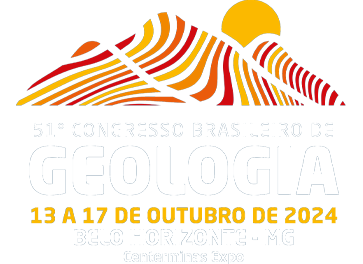Dados da Submissão
Título
APPLICABILITY OF LOW-COST AUTOMATED SENSORS FOR MONITORING METHANE (CH4) EMISSIONS
Texto do resumo
This study proposes to test the feasibility of using an experimental system composed of low-cost commercial metal-oxide semiconductor (MOS) sensors for measuring methane (CH₄) released from sedimentary rocks during scientific drilling in the Acre Basin. The system uses a sensor from Figaro Engineering Inc., integrated into printed circuit boards with temperature, humidity, and carbon dioxide (CO₂) meters. The study method consists of comparing measurements obtained by low-cost sensors to measurements from high-end optical sensors and gas chromatographs (GCs). So far, three sets of data have been obtained. The first set of data was collected from an experiment in which an artificial atmosphere of known concentration (2 to 4 ppm of CH₄ and 530 to 850 of CO₂) was created around the sensors, and the acquired data were compared to discrete gas samples analyzed in a GC. The purpose of the experiment was to evaluate the sensors’ behavior when placed in a controlled atmosphere chamber. Lasting 1 hour and 20 minutes, the data showed three punctual increases in the measured concentration, corresponding to the injections of known standard gases. The second contains data on atmospheric concentration and a controlled leak of an Ar-CH₄ gas mixture (10%), in which, alongside the sensors, the GLA132-GGA from ABB Ltd. was used. The experiment lasted four uninterrupted days, with the controlled leak occurring on the last day. The values acquired by the GLA132-GGA ranged from 2000 to 3000 parts per million (ppm), while the sensors in this study also peaked at a reading of 2047 millivolts (mV). As for the third set of data, it was collected during the Transamazon Drilling Project (TADP), in a drilling operation in the Acre Basin, western Amazon. In this operation, sensor boards were installed in the Online Gas Analysis System (OLGA) coupled with the drilling fluid circulation system. The OLGA used two gas chromatographs from SRI Instruments for 15 days. While the GCs measured CH₄ levels from 80 to 120 ppm, the sensor readings ranged from 1100 to 1200 mV, which accompanied the variations from the GCs measurements. Moisture interference on MOS-type sensors described in the literature was observed in the experiments. New tests with multiple gas mixtures and environmental conditions should be performed to understand their operation when subjected to different atmospheres. Calibration procedures with humidity and CH₄ control should be established for more robust future analyses. It’s high capability of data acquisition and storage capacity, with also the need for sensors to preheat before taking readings, make their application more suitable for long-term monitoring.
Palavras Chave
Greenhouse gases; Flux chambers; Methane; Emissions monitoring
Área
TEMA 16 - Geoquantificação e Geotecnologias
Autores/Proponentes
Thomás Comar Miranda, Dailson José Bertassoli Jr, Kleiton Rabelo De Araújo, Angela Etheliz Jiménez Martínez, Henrique Oliveira Sawakuchi, David Bastviken, Izabel da Silva Andrade, José A S Da Mata, Elaine Cristina Araújo, Thaís Andrade Da Silva, Eduardo Landulfo, André Oliveira Sawakuchi
